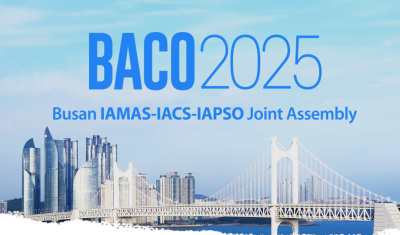HiPerBorea was a research project coordinated by Geosciences Environnement Toulouse (GET) laboratory and funded by the french National Agency for Research (ANR) for the period 2020-2025. The objective of this project was to enable quantitative and predictive modeling of cold regions hydrosystems evolution under climate change. Arctic and sub-arctic areas, which are highly vulnerable to global warming, are largely covered by permafrost – soil that is year-round frozen at depth. Permafrost-affected areas, which represent 25% of emerged lands of the northern hemisphere, are prone to major biogeochemical and ecological transformations due to permafrost thaw, with strong associated feed-backs on greenhouse gas cycling (degradation of previously permanently frozen organic carbon pools). We used advanced numerical modelling based on permaFoam (the OpenFOAM® solver for permafrost modelling, see Orgogozo et al., 2019 and Orgogozo et al., 2023) to address the issue and help predict the impact of permafrost thaw on arctic thermo-hydrologic functioning. By doing so, we provided mechanistic understanding of Arctic change, that is necessary to further understand carbon cycling and contaminant/nutrient transport, and to further assess risk and opportunity for sustainable urbanization, agriculture and general sustainable development of the (sub-)Arctic.
HiPerBorea will be followed by a new ANR-funded project dedicated to the development of hybrid modelling of permafrost: the PERMACHANGE project (2026-2029).
Contact : Laurent Orgogozo, Associate Professor at Geosciences Environment Toulouse laboratory (email: laurent.orgogozo@get.omp.eu)
HiPerBorea Publications:
2025 Raudina, T.V., Loiko, S.V., Istigechev, G.I., Kulizhskiy, S.P., Orgogozo L., Pokrovsky, O.S.: Contrasting soil temperature regimes in peatlands of the discontinuous permafrost zone (Western Siberia), Geoderma, 457,
2025, 117294, https://doi.org/10.1016/j.geoderma.2025.117294
2024 Xavier, T., Orgogozo, L., Prokushkin, A. S., Alonso-González, E., Gascoin, S., and Pokrovsky, O. S.: Future permafrost degradation under climate change in a headwater catchment of central Siberia: quantitative assessment with a mechanistic modelling approach, The Cryosphere, 18, 5865–5885, https://doi.org/10.5194/tc-18-5865-2024
2023 Y. Auda, E.J. Lundin, J. Gustafsson, O.S. Pokrovsky, S. Cazaurang and L. Orgogozo, A New Land Cover Map of Two Watersheds under Long-Term Environmental Monitoring in the Swedish Arctic Using Sentinel-2 Data. Water, https://doi.org/10.3390/w15183311
2023 S. Cazaurang, M. Marcoux, O.S. Pokrovsky, S.V. Loiko, A.G. Lim, S. Audry, L.S. Shirokova, L. Orgogozo, Numerical assessment of morphological and hydraulic properties of moss and lichen from a permafrost peatland. Hydrol. Earth Syst. Sci., 27, 431–451, 2023 https://doi.org/10.5194/hess-27-431-2023
2023 L. Orgogozo, T. Xavier, H. Oulbani, C. Grenier. Permafrost modelling with OpenFOAM ® : the permaFoam solver. Computer Physics Communications 282 (2023) 108541 https://doi.org/10.1016/j.cpc.2022.108541
2023 Léger, E., Saintenoy, A., Serhir, M., Costard, F., and Grenier, C.: Brief communication: Monitoring active layer dynamics using a lightweight nimble ground-penetrating radar system – a laboratory analogue test case, The Cryosphere, 17, 1271–1277, https://doi.org/10.5194/tc-17-1271-2023, 2023.
2023 Léger, E.; Saintenoy, A.; Grenier, C.; Séjourné, A.; Pohl, E.; Bouchard, F.; Pessel, M.; Bazhin, K.; Danilov, K.; Costard, F.; et al. Comparing Thermal Regime Stages along a Small Yakutian Fluvial Valley with Point Scale Measurements, Thermal Modeling, and Near-Surface Geophysics. Remote Sens. 2023, 15, https://doi.org/10.3390/rs15102524
2023 Morgalev, S.Y., Lim, A.G., Morgaleva, T.G., Morgalev, Y.N., Manasypov, R.M., Kuzmina, D., Shirokova, L.S., Orgogozo, L., Loiko, S.V., Pokrovsky, O.S. Fractionation of organic C, nutrients, metals and bacteria in peat porewater and ice after freezing and thawing. Environ Sci Pollut Res 30, 823–836 (2023). https://doi.org/10.1007/s11356-022-22219-1
2021 L. Orgogozo, RichardsFoam3: A new version of RichardsFoam for continental surfaces hydrogeology modelling. Computer Physics Communications 270 (2022) 108182 https://doi.org/10.1016/j.cpc.2021.108182






















